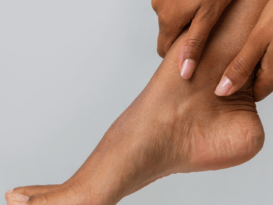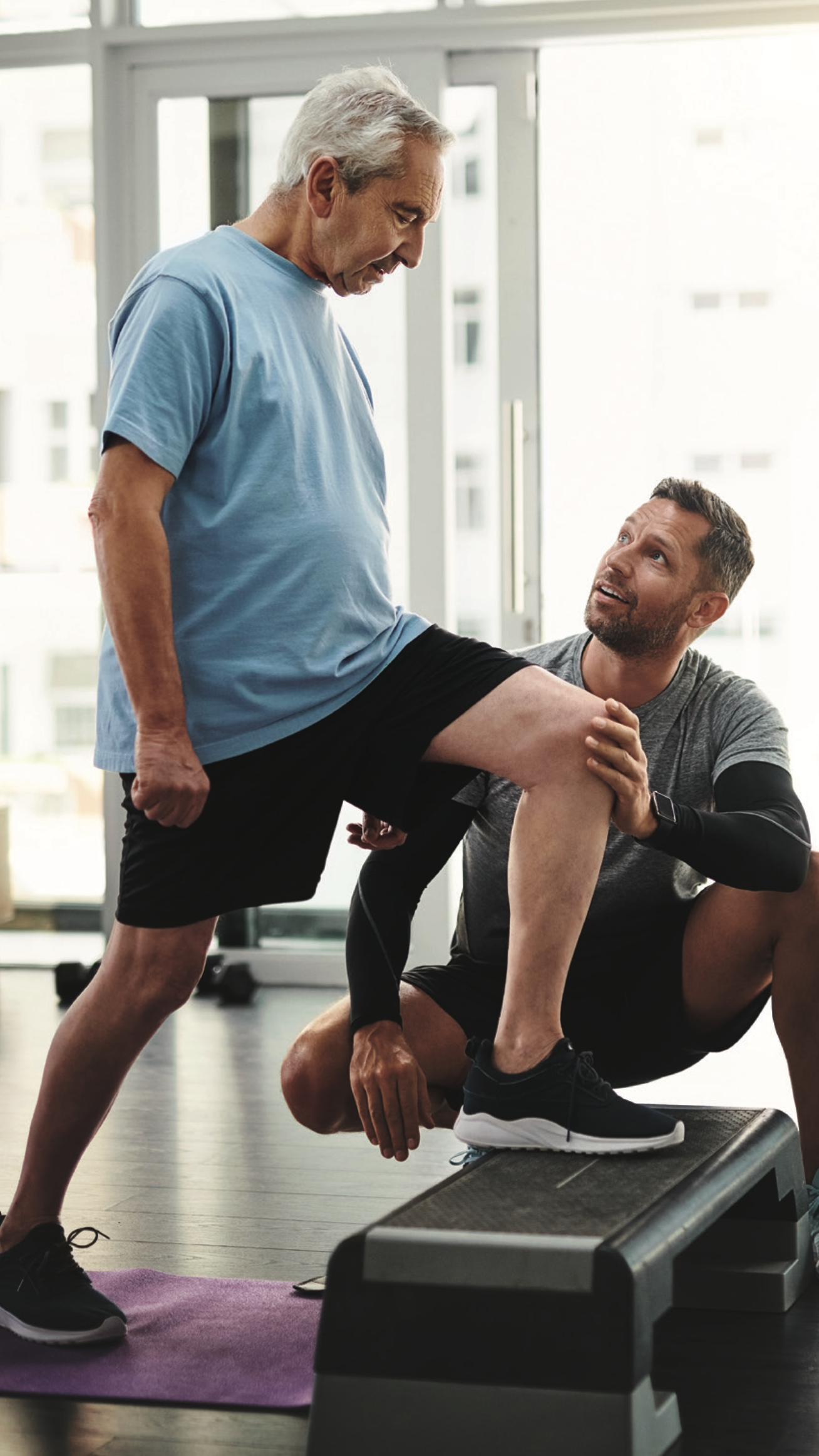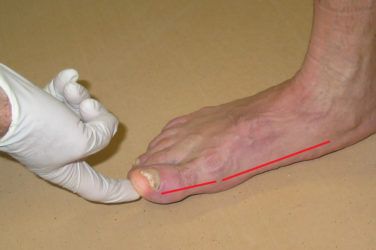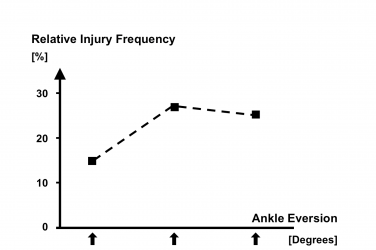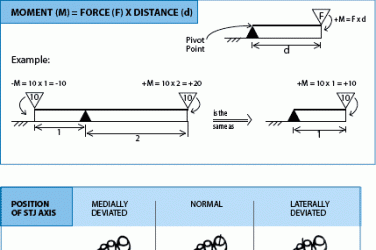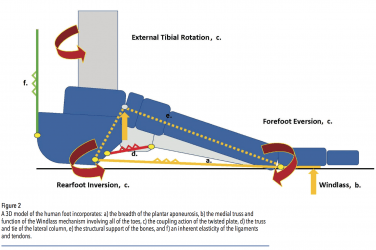Falls and fall related injuries are very common in older adults and the incidence of falling is on the increase as a larger percentage of adults are entering their senior years (> 65 years). It is well documented that falling can have tremendous negative effects on a person’s functional independence and quality of life, damaging their confidence and limiting their activities. This is now recognized as a global problem and teams of international experts have assembled guidelines for falls prevention and management for older adults1.
By the Numbers
The statistics are alarming. In 2018, 27.5% of American adults aged ≥65 years reported at least one fall in the past year, and 10.2% reported a fall-related injury. According to the Centers for Disease Control and Prevention (CDC) falls are the leading cause of injury among adults aged 65 and older. They resulted in over 38,000 deaths in 2021, the leading cause of injury death for that group. In 2021, emergency departments recorded nearly 3 million visits for older adult falls, making falls both highly disruptive and very expensive. In addition, falls result in substantial medical costs and data from the last decade estimated the total annual spending attributable to older adult falls in the U.S. was approximately $50bn2. A more recent paper estimated the direct costs of in-patient falls exceeds $35,000 per incident3. The good news is falls are not inevitable as we age and, with proper protocols in place, they can be prevented.
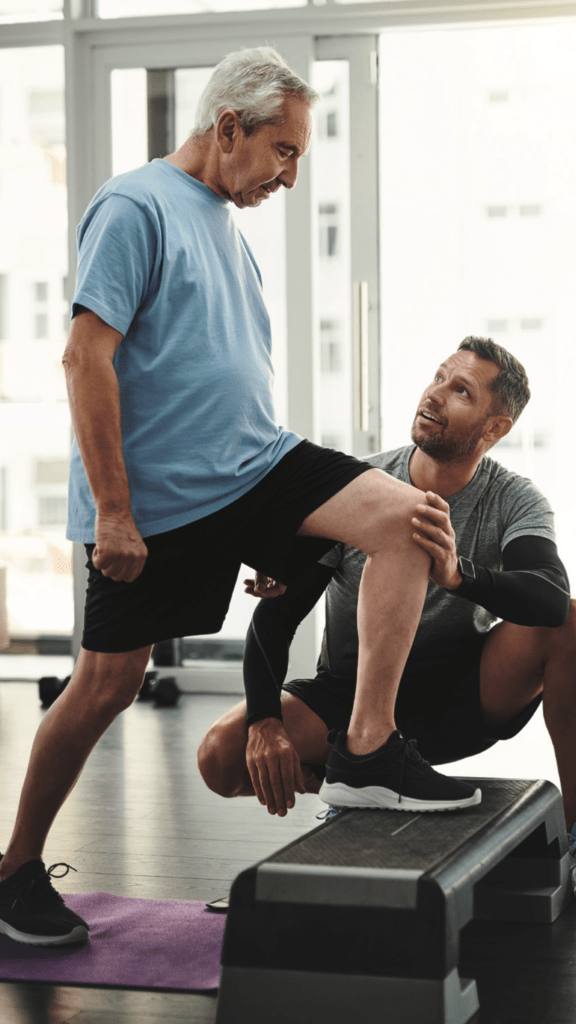
Screening and Assessing
Recognizing the gravity of the situation the CDC set up their STEADI initiative (Stopping Elderly Accidents, Deaths and Injuries) to help address the challenge4. The site’s clinical resources page is a coordinated approach to implementing the American and the British Geriatrics Societies’ practice guidelines for fall prevention5 ( https://www.cdc.gov/steadi/hcp/clinical-resources/index.html ). The program provides a wide variety of education, screening tools and other resources for patients and healthcare providers. It incorporates three core elements: Screening, Assessing and Intervening. Their algorithm recommends annual screening using a 12-question check-list. If the patient is determined “at-risk” a fuller assessment is warranted. This requires a visit to the doctor’s office as it covers broad areas such as monitoring orthostatic blood pressure, identifying medications that increase fall risk, checking for vision problems, incontinence and other comorbidities. However, some factors lie within the realm of lower extremity specialists including:
- Gait, strength and balance evaluation.
- Inspection of the feet, and the suitability of footwear.
- Inquiry about home conditions and hazards such as stairs, throw rugs, etc.
Having identified pertinent issues the objective is to intervene and reduce the fall risk using proven strategies. Each plan should be tailored to the individual, and it is proven that patient education is a key part of the overall success.
Lower-limb Factors
It is well documented that as people age (>50 years) a gradual loss of muscle mass, strength and power occurs. Simultaneously, there is often a reduction in flexibility and joint ranges of motion. These changes in turn affect balance and agility setting the stage for an increased risk of falling. One study demonstrated toe weakness and deformity increase the risk of falling in older people as adequate toe flexor strength is crucial in maintaining balance6. The authors stated reduced toe flexor strength and the presence of toe deformities, such as hallux valgus, increase the risk. Likewise, calf strength, and to a lesser degree quad strength, have been shown to affect balance. Although hip and core strength are not directly implicated in fall risk they are seen as good preventative measures. They are certainly beneficial for recovery, getting back up in the event of a fall, and avoiding the designation of being clinically frail. It is also recognized the dire effects of falls increase with time and typically 85-year olds have a much more severe outcome from a fall compared to 75- or 65-year olds.
A systematic review and clinical synthesis of lower-limb factors associated with balance and falls in older adults was published in JAPMA in 20207. The paper provided a comprehensive overview of the topic drawing on literature primarily from the last decade. One of the stated aims was to further the hypothesis that age-related lower-limb problems could be linked to evidenced based risk factors for falls in older adults. The authors presented 8 distinct pathways linking factors with fall risk and falls (Table 1).
Table 1. Age-related Changes to Increased Fall Risk
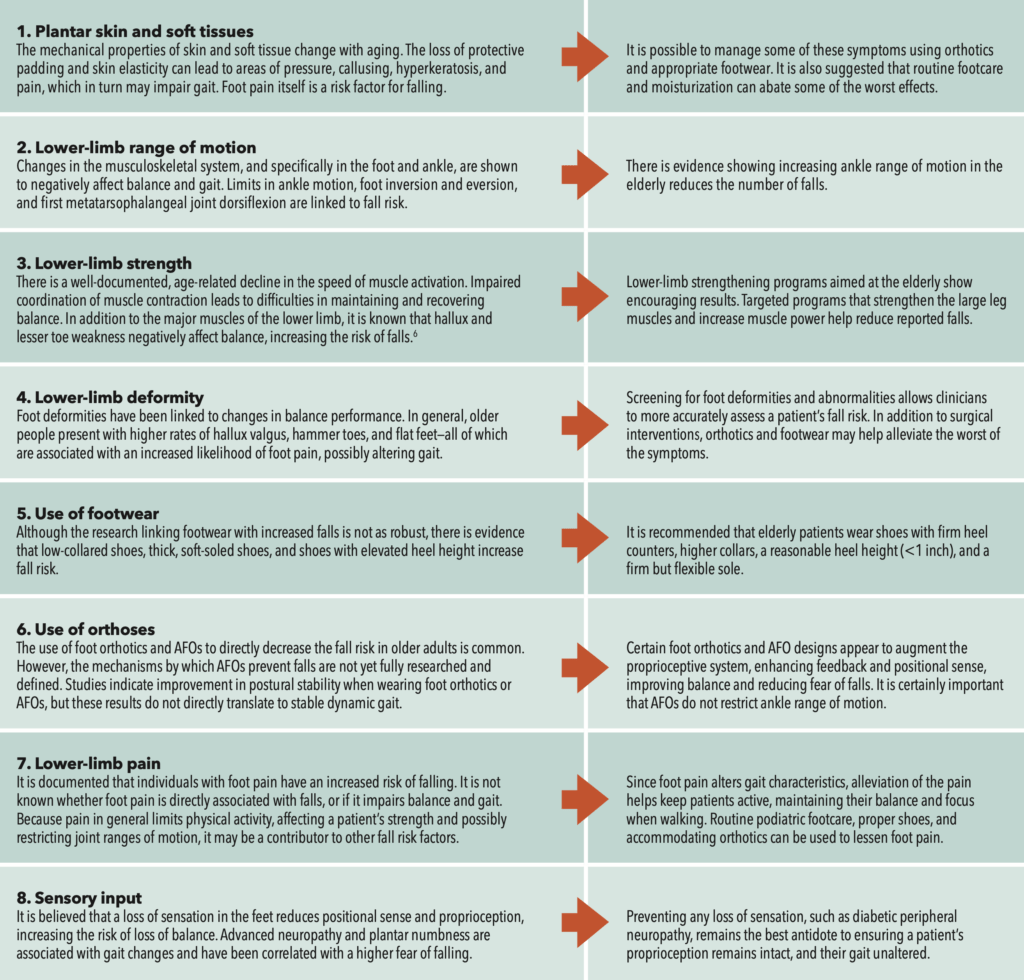
Unsurprisingly, the results highlight the relationship between balance and gait disturbance and falls. One study showed fallers tend to have a slower walking speed and cadence, and longer stride time and double support duration. They also have a shorter stride and step length, and wider step width. None of these characteristics in themselves have a definitive relationship to fall risk or falling but they highlight a common pathway for the other risk factors. In clinical terms, observation of these changes in gait can act as early warning signs for fall risk.
Footwear
Providing patients with suitable footwear may be one of the simplest steps to reducing fall risk and prevent a potential catastrophe. The first thing is to measure both feet with a Brannock device and fit the best shoe for their foot type. The shoe should have some heel elevation – positioning the ankle in mild plantarflexion – but no more than 1” high. Heel heights approaching 2” have been linked to greater postural sway. A shoe with a textured sole and a slight posterior heel bevel can prevent slipping. A flat but wedged sole, with an appropriate heel drop, is preferable to a raised heel that can catch on surfaces.
As proprioception is important to balance selecting a high collar shoe, such as a chukka boot or high top, that activates mechanoreceptors around the malleoli may improve sensory feedback. Likewise, the sole should not be too soft as this overly dampens vibration. A reasonably firm-soled shoe with stiff heel counters and broad flared heels that flexes at the ball is ideal. Clearly, lace or Velcro closures that snug the foot and ankle are better than loose fitting sandals, slippers, clogs or other styles. Finally, going barefoot, even in the home, is not recommended at all.
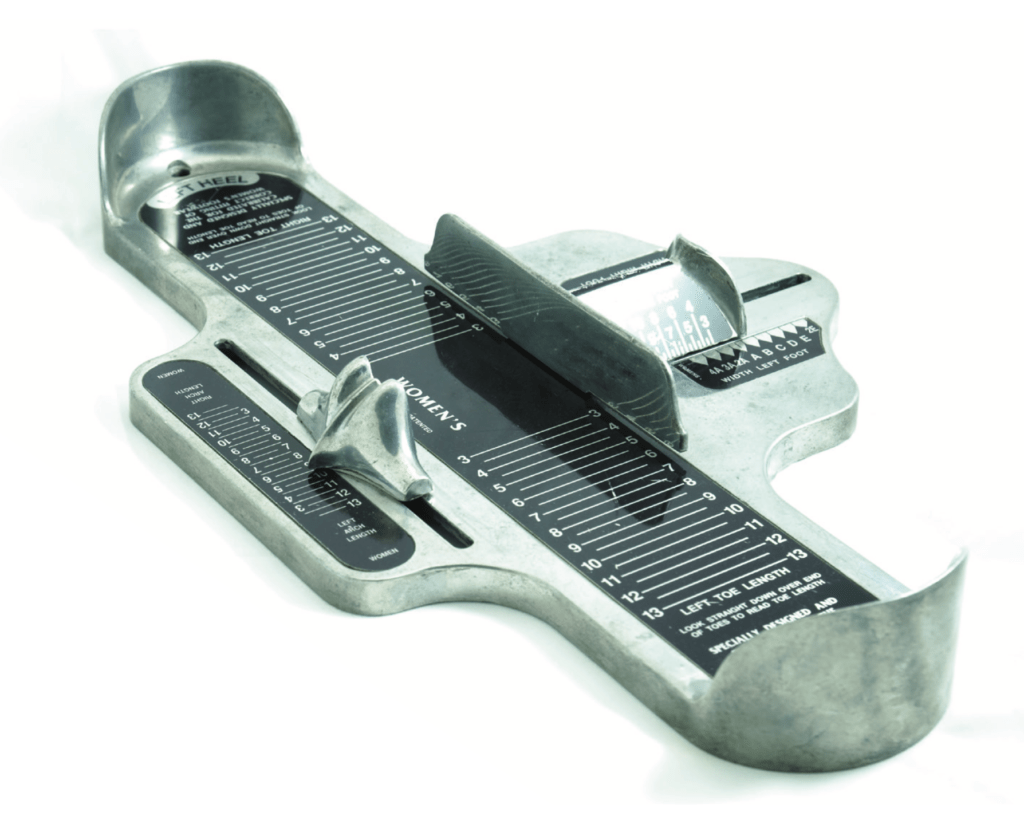
Foot Orthotics and AFOs
Foot orthotics address several of the risk factors listed in Table 1. Accommodative foot orthotics can be designed to relieve discomfort and pain in the feet, and functional devices optimize joint position. Providing arch support, a deep heel cup and total plantar contact stimulates sensors on the bottom of the foot. In addition, pads and depressions may be included to relieve areas of boney prominence or specific pain.
While the use of AFO’s to improve balance in neurologic impaired patients, such as post-stroke, is well understood the benefits of an AFO to maintain balance in non-neurologic patients is less clear. AFO’s do provide additional sensory input and studies show they improve measures of static postural stability and decrease sway. However, there is a paucity of research connecting these results to dynamic gait. Given that lower limb range of motion is a risk factor for falls it is very important that these AFOs do not restrict ankle motion. Further, it seems the benefits derived from AFO use in relation to fall risk may be patient specific and accordingly each individual must be evaluated separately.
Conclusion
There are many recognized fall risk factors including use of specific medications, visual problems, vestibular issues, neurological disorders and even fear of falling itself. The world guideline for falls prevention ends with the statements: All older adults should be advised on falls prevention and physical activity. And, those considered at high risk should be offered a comprehensive multifactorial falls risk analysis which can inform a personalised multidomain intervention.
As lower limb specialists we are integrated with teams that keep patients moving. Our interventions have the potential to influence some of the lower limb factors associated with balance and falls in the elderly. In particular, we can address some of the foot problems associated with fall risk using orthotics, well-fitting footwear and in certain cases AFOs. Solutions that alleviate foot pain, enhance sensory feedback and reduce fall anxiety keep people active. To counteract age related losses in strength exercise and stretching programs have been developed. Finally, research indicates Tai Chi is an effective exercise for preventing falls and improving balance ability in older adults8. Education is also a key component in reducing fall risk.
Séamus Kennedy, BEng (Mech), CPed, FAAOP(A), is president and co-owner of Hersco Ortho Labs, New York. He can be contacted at seamus@hersco.com or by visiting www.hersco.com.
References
1. World guidelines for falls prevention and management for older adults: a global initiative.
Manuel Montero-Odasso et al.
Age and Ageing. 2022 Sep 2;51(9).
2. Medical Costs of Fatal and Nonfatal Falls in Older Adults
Curtis S Florence et al.
Journal of the American Geriatrics Society. 2018 Apr;66(4):693-698
3. Cost of Inpatient Falls and Cost-Benefit Analysis of Implementation of an Evidence-Based Fall Prevention Program
Patricia C. Dykes et al.
JAMA Health Forum. 2023 Jan; 4(1): e225125.
4. https://www.cdc.gov/steadi/about/index.html
5. https://www.cdc.gov/steadi/hcp/clinical-resources/index.html
6. Toe weakness and deformity increase the risk of falls in older people
Karen J Mickle et al.
Clinical Biomechanics. 2009 Dec; 24(10):787-91.
7. Lower-Limb Factors Associated with Balance and Falls in Older Adults: A Systematic Review and Clinical Synthesis
Christopher Neville et al.
Journal of the American Podiatric Medical Association. 2020 Sep 1;110(5):Article 4
8. Tai Chi for fall prevention and balance improvement in older adults: a systematic review and meta-analysis of randomized controlled trials
Weidong Chen et al.
Frontiers in Public Health. 2023; 11: 1236050.
